#Regrow lettuce
Text
My Green and Healthy Kitchen…March 2024...Is your honey really honey or fake? Parmesan Cheese Rinds, Homemade Sundried Tomato Pesto, Egg Shells? 3D Steaks!
Hello and welcome to March’s edition of my Green and Healthy Kitchen 2024…where I aim to cook chemical-free food, food that is in season and grown either by myself or purchased locally …where you will never see the calorie content of a recipe as I believe you should count chemicals and not calories and to be honest there are plenty of calories counters online if that’s your thing… mine is I eat…
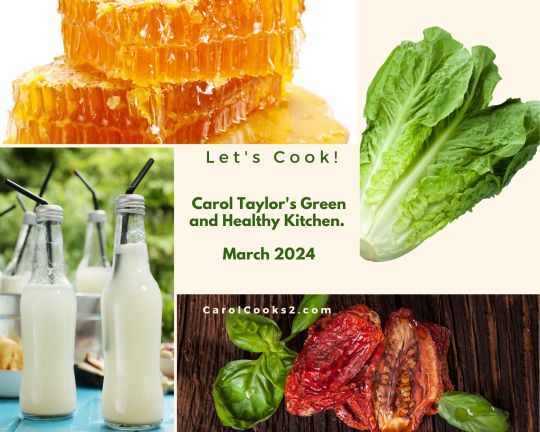
View On WordPress
#3D Steaks#blogging#Carol Taylor&039;s Green Kitchen#Egg shell pest control#Keffir milk and water grains#Parmesan Rind hacks#Regrow lettuce#Sundried Tomato Pesto
0 notes
Text



Silly little comic I made.
#the burnt lettuce part is probably true tbh#van kleiss just seems like the kind of guy who would smell like burnt lettuce#even after he’s no longer literal dirt just figurative dirt#rex actually does regrow limbs he’s like a freaky little mechanical axolotl boy#i wish we’d gotten to see what rex regrowing a limb actually looks like in the show and not just in the comic#it probably would’ve looked really cool and i want to see it#van kleiss probably learned that rex could regrow limbs by nefarious means and rex probably doesn’t remember it#which is probably for the best that man has traumatised him enough#i honestly didn’t mean to have van kleiss deciding to be a dick by giving an answer to noah and not rex#but i didn’t want to just have him stand there in the background because that’s boring#and it somehow fits the pettiness of who he gives information to willingly because it’s not rex and it almost never is#every time i watch the show noah and rex become even more boyfriends to me#also i think noah deserves to get in a dig at vk every once in awhile#like van kleiss did almost have him killed and he had to see van kleiss stabbing rex in the first episode#and van kleiss turned him into an evo once so like#yeah he should get to roast him sometimes#sarcastic unhinged trans noah my beloved#generator rex#generator rex fanart#genrex#genrex fanart#rex salazar#noah nixon#van kleiss#noex#theaxolotlart
18 notes
·
View notes
Text
Hey all I'm doing a lil regrow tryout from grocery store produce.

Day 3 of trying to root celery

Day 3 of trying to regrow store lettuce.
There's a lil peek of some new greens! :D
March 8, 2023
#homesteading#self sufficient living#studentfarmer#thestudentfarmer#self sufficiency#food#garden#gardening#low waste#chickens#celery#celery regrow#celery root#lettuce#lettuce regrow#scrap gardening#tryitout#let it grow
9 notes
·
View notes
Note
Yesterday I hit a new level of Bird Owning and planted some fennel in the garden because its fronds are the only greens that Oskar consistently eats and it's so expensive in stores and would you deny this little lad his precious treat???

Have you ever thought about growing snacks for your beans? Sometimes I think about getting more into sprouting but I'd need a better setup 💚
😭 they’re so adorable
I grow lettuce for them in the summer! Grab a living lettuce from the store then just replant the roots once I’ve harvested it and it’ll just keep regrowing for most of the season so the birds get crispy crunchy fresh leaves!
I want to do more gardening this year and actually establish some like pot vegetables! We just finished bunny proofing the yard so I’m hoping next spring I can start growing some more fun stuff for them!
Edible flowers are something I REALLY want to get more in to I’m just finding it hard to get accurate information on what ones are safe to eat and exactly what parts are safe (sometimes it’s just the petals but not the pollen or stems, it’s hard to figure out)
I try to sprout year round, I just use a mason jar with a paper towel over the top and leave it tilted downwards so it can continuously drain! Easy cheap setup! So long as you rinse them extremely thoroughly usually twice a day for me they grow well and don’t get mildewy!
34 notes
·
View notes
Note
since plants know they're being eaten how does it feel to be them when they're being eaten
well, it depends what plant
-grocery store plants are dead. if you eat a veggie from the grocery store, that is like eating a raw corpse :)
if you eat a plant while its still attached to the original roots and stem and alive/dug up and dying, then it also depends.
-i would think roots and stems (carrots, celery, potatoes, beets) are like eating digestive tracts and necessary organs since the plant will die if you eat them. its like eating someones entire midsection and discarding their limbs and head.
-leaves (spinach, cabbage, lettuce, brussels sprouts, leaves) are like eating limbs or teeth since theres more of them, and you can remove them without the plant dying, and the plant will replace them (similar to a salamander regrows limbs or a shark regrows teeth). its like amputation.
-and ofc fruits are the equivalent of eating pregnant uteruses.
hope this helps anon!
12 notes
·
View notes
Text
Tinies would be so much help in a garden
I've been thinking about this for a while now. Anytime I'm weeding in a flower bed or vegetable garden I think about this. A lot of times there are these large patches of little clover or oxalis sprouts that are just so small and close to the ground that you have to use the very tips of your fingers to get them up. If you pinch your fingers too far you risk cutting through the stem with your fingernails and a lot of weeds are stubborn enough that those little hair-like roots left behind are enough to regrow from. Just tilling them up isn't usually enough either because they'll typically just take root again if you leave them on the ground after uprooting them. The worst part is you usually just have to resign yourself to having to go over it again a few days later bc you know you probably only got about half of them.
Just imagine a tiny/borrower helping a farmer/gardener with their chores. The tiny would be able to get all the little ones easily while the farmer works on bigger more stubborn weeds. A little helper that can help find weeds growing under the low branches of shrubs would be a godsend. It doesn't stop at weeding either.
Anyone who has had a larger vegetable garden knows that a good chunk of time spent harvesting is just trying to find what's ripe (especially things like tomatoes or cucumbers). I usually end up folded in half with my head stuck in a mess of vines or branches, sometimes gently shaking the plant, because maybe I'll catch a glimpse of something. A tiny that could just walk underneath it all and call out where the ripe crops are, and it would probably cut the time in half.
Honestly I could go on for a while. Tinies could help sow some of the itty-bitty seeds that are really hard to pick up a specific number of, like lettuce or poppies. Being small enough to see the undersides of leaves would make catching pests or fungal infections early a breeze. Most of this would result in fewer chemicals being needed meaning minimal harm to pollinators and the watershed. I also love the idea of a farmer striking a deal with a borrower colony they find living in their house where the borrowers get to harvest what they please in exchange for help in the garden.
If I had the time and the talent maybe I'd write something with this idea, but I knew I wanted to just put this out there in some capacity. I don't think I've ever seen this done before. If anyone wants to use this as a prompt or something go for it, just tag me (I wanna see).
#g/t#giant tiny#gianttiny#giant/tiny#gts#tiny#tinies#borrower#borrowers#gardening#gt prompts#g/t prompts#gt writing#g/t writing
94 notes
·
View notes
Text
Easy From Seed Vegetables
The content of this blog post is from Home Garden Seed Association. It’s an excellent resource for home gardeners. They promote gardening from seed as the easy, natural and economical way to garden. Their website provides well researched and useful articles about how to garden from seed. Need inspo?
Beans, Beets, Cucumbers, Kale, Peas, Radishes, Salad Greens, Squash, Swiss Chard
Most of the vegetables typically grown in a home garden can be sown directly in the garden soil. These include salad greens of all kinds��lettuces, mizuna, arugula, spinach, and mustards—as well as beans and peas, root vegetables, summer and winter squash, and cool season cooked greens like kale and chard.
First, prepare the garden bed, loosening the soil and incorporating plenty of compost. Then, simply follow the guidelines below. In just weeks, your bountiful, delectable summer harvest will begin!
Left to right: Bean seedling, lettuce seedlings, chard seedling
Beans may be pole beans, or they may have a bush habit. In either case, wait until nighttime temps stay consistently above 50ºF to sow. For bush beans, poke seeds into the soil about an inch deep and 4 inches apart in rows that are about 1½ feet apart. Two sowings, about 3 weeks apart, will extend the harvest. For pole beans, be sure set up the trellis prior to planting time.
Beet seeds are actually clusters of seeds. Once danger of frost has passed plant them about an inch apart and ½ inch deep—and don’t be surprised if clumps of seedlings emerge. Thin them to about 2 inches apart when they are an inch or two tall, and again as the plants develop. When plants are 3 inches apart and plump enough for your purposes, you can harvest some at the baby stage, allowing others to enlarge.
Cucumbers will be set back by cold nights, so wait until nighttime temps stay above 50ºF. Sow 5 or 6 seeds, covered by an inch of soil, in a low mound, and thin to the 3 best plants as they start to develop. In a small garden, you can grow cucumbers up a trellis or fence.
Kale seeds can be sown in early spring, about 2 inches apart and ½ inch deep. Thin plants to about 12 inches apart when they are 3 to 4 inches tall, using the thinnings in salads. Begin harvesting outside leaves when plants have at least 6 sets of leaves. A second kale sowing in late summer will provide greens into the winter.
Peas, especially edible-podded peas, are a productive spring crop. They require some support, so plant seeds next to a fence or erect a structure to support them before planting. Sow seeds an inch deep and 2 to 3 inches apart in early spring. Generally, no thinning is needed.
Radish seeds can be sown in early spring, spaced 1 inch apart and covered with ½ inch of soil. Thin them early to 2 inches apart to give them room to develop. Rather than planting a big row, sow small amounts a week apart for a continuous harvest.
Salad Greens, planted thickly in wide rows, can be harvested two or even three times. Make successive small sowings until the weather turns hot for a steady supply of baby greens. Beginning in early spring, broadcast the seeds so that they fall about an inch apart and cover with ¼ inch of soil. Firm gently and keep the bed evenly moist. Harvest with scissors when they are 4 to 5 inches tall, and allow the plants to regrow.
Squash will be set back by cold nights, so wait to plant until nighttime temps stay above 50ºF. Sow 4 or 5 seeds in a low mound, covered by an inch of soil, and thin to the 2 best plants as they start to develop. Summer squash, such as zucchini or patty pan, are tender and tasty when harvested young, no larger than 6 inches. If you have the space, you can also plant summer and winter squashes in staggered rows.
Swiss Chard seeds, like beets, are clustered seeds. Sow them ½ inch deep and 2 inches apart once danger of frost has passed. Thin the seedlings when they develop two sets of leaves and add the thinnings to salads. Final spacing should be 12 to 15 inches apart.
5 notes
·
View notes
Text

Hey, did y'all know you can regrow leek and lettuce? Nature's BOGO
3 notes
·
View notes
Text
Learn The Very Simple ABCs Of Vitamins And Minerals
Best avocado salad recipe 's been said time and time again that we should be taking in more vegetables than any other source of nutrients, even when many people focus on meat for protein. It's completely possible to get protein from other sources and have a more varied diet! Read on for some useful tips.
If you are lacking in the vitamin department, you should consider changing your diet. While many people take this as a sign that they need to run to the store and buy a supplement, most of the nutrients you need can be found in food. Do a little research in order to figure out what changes need to be made.
If you are lacking a particular vitamin, it is probably best for you to add that to your diet instead of taking a multivitamin. While there are many different vitamins and minerals in these pills, most of the time the level of particular vitamins is not as high as we need. Buying a single vitamin would be more effective.
If you are planning on taking any vitamins and minerals, you should try to schedule them around mealtimes. When you eat and digest your food, stomach acid is produced. This can help break down any vitamins you are consuming, which means that they will be a lot more effective.
Try adding more magnesium, Omega-3 fatty acids, and vitamin D to your diet if you are feeling sad. A deficiency in any of these may actually lead to depression. Omega-3 fatty acids are known to support brain health, while magnesium can help your body and mind calm down and relax.
Supplementing vitamins and minerals is more important now than ever. Many foodstuffs are prepared in a way that depletes nutrients, vitamins, and minerals. These nutrients can be replaced in your diet by taking a high quality supplement.
To boost the resiliency of your body, try taking flax seed oil and turmeric. Both of these can help reduce inflammation in the body. They can also protect you from illness. There are oil blends of the two that are known to help the joints, along with bettering brain and heart health.
If you are trying to grow out your hair or nails, consider adding a Biotin supplement. While it won't make your hair or nails grow faster, it will make them stronger and more resistant to breakage. In fact, Biotin is often recommended to chemotherapy patients to help them regrow the hair that they lost during treatment.
Although all vitamins and minerals are important, some are even more important for growing children. When planning your child's diet, make sure they are getting enough vitamins A, C and D, as well as the B vitamins. Calcium and iron are also very important for your growing children's bodies.
Are you a woman of childbearing age? If so, you may be low in magnesium. In fact, 60 percent of women or more may be deficient in magnesium. Your best it is to talk to your doctor about having tests done to measure your levels, and if you are low, pick up a supplement.
You can add folate or vitamin B9 to a healthy diet. It boosts cell health, boosts red blood cell production, and promotes heart health. It can be found in a variety of foods, too. These include lettuce, asparagus, lentils, spinach, and beans. People that do not get enough folate in their diet can also try taking folate supplements.
Truth be told, supplemental vitamins and minerals are as good as getting the same things from food. Although the absorbtion rate of a supplement might not be a big benefit, you still get the same helpful nutrients this way. Try a good multivitamin.
Have you ever told yourself you don't need vitamins and minerals because you never get sick? Well you actually still need them as they not only help fight off infection, they also alleviate symptoms of stress which we all endure at some point. Vitamin C is the wonder vitamin as it aides in not only health and reducing stress but even healthy eyes just for an example.
If you feel like there is more you can do to improve your diet, you are probably right. This article should have given you a good place to start, and there is no such thing as too much research. Make sure to talk to your doctor and figure out what is right for you!
2 notes
·
View notes
Text
Hey all!
I hope everyone's had a Great week and been able to work towards some of their overall goals and been able to get in their garden.
Lettuce regrow update~
6 days ago I posted dabout a lettuce regrow (9 days old at time of picture) they've gotten some growth in that time.

I did add to the lettuce bowl, a carrot top. Just to see if I can get it to sprout a flower stalk and maybe some seeds. (Added 3.13. 2023)
The celery has not much for movement, some spreading on the stalks. But haven't really seen any tangible rooting.
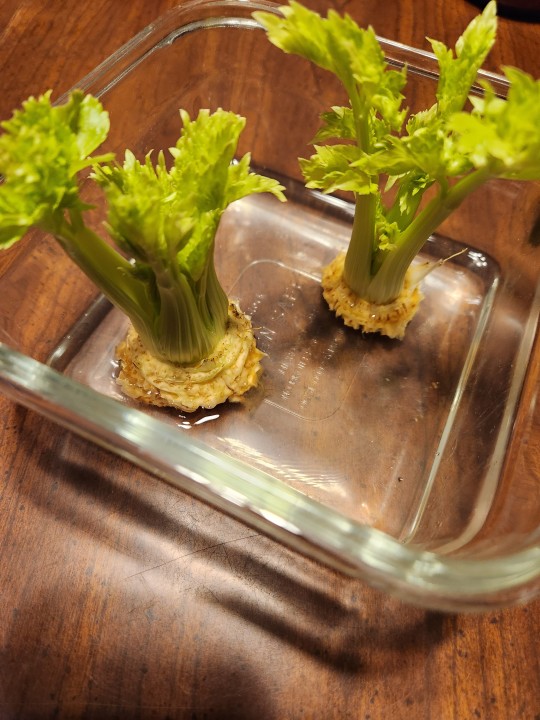
Also a chick pic update~

Lentil update as well~
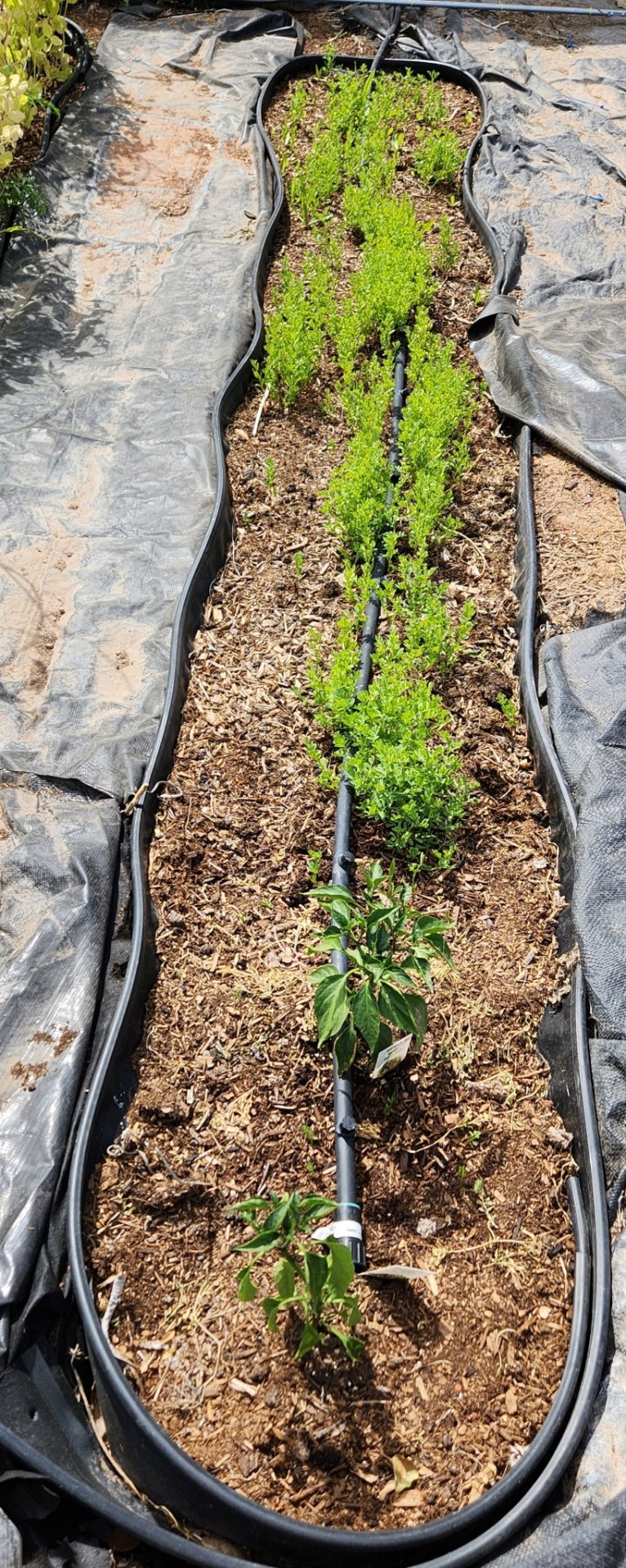
I had to pinch some flowers off the peppers, but their still a lil small for fruiting.
The Nasturtium is getting massive! I've gotta trim it up this week. I may even get around to trying a recipe with some of the leaves now. If not, the chickens will get the trimmings.

A small lil overlook~
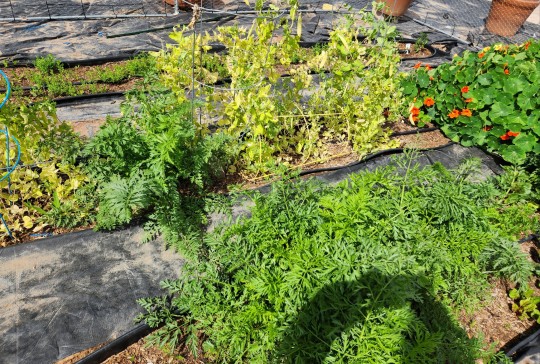


Last week's goals I managed a batch of bagels and pretzels! Unfortunatly I think I got far too ambitious because they did not come out as delicious as I hoped.
But I'm gonna give at least bagels a go again this week! If I make a good batch I'll be freezing half of them for use throughout the month.
Also something not too awesome happened, something got into my seed starts and destroyed them, so I will not be showing seed starts yet. Friday I plan on redoing them (well what I can. Since some of the variety I no longer have. Well, I guess it means a different variety was desired is all lol.
This week I hope to get new seed starts going and the start of my flower patch in the back going.
I also want to make a sourdough dessert and try to get a rough idea of a month's worth of meal planning so I can make some bulk purchases of what I consider staples for the kitchen. (Flour, rice, yeast, sugar, noodles, some sauces and seasonings)
I would like to get some sewing and craft done this week. But we'll see how that goes lol.
What's everyone's plans/goals for their homesteads, Gardens or more sustainable/eco journey going?
🌱🐝 Happy Homesteadin and Gardening~ 🐝🌱
3-16-2023
#homesteading#self sufficient living#studentfarmer#thestudentfarmer#self sufficiency#food#garden#gardening#low waste#chickens#lentils#carrot#peas#sweet pea#peppers#jalapeños#pumpkin#corn#chard#experimental gardening#garden planning#garden chaos#chicks#animal husbandry#nasturtium#cucumber
55 notes
·
View notes
Text
Creative Ways to Use Leftover Fresh Vegetables: Minimizing Food Waste in the Kitchen

Food waste is a significant problem. Not only does food waste contribute to climate change and the depletion of many of our natural resources, but it also increases greenhouse gas emissions. Online Cut Vegetables Delivery is a big benefit to minimize leftovers.
Fortunately, there are various actions you can take to reduce food waste, such as pre-planning your meals, only purchasing what you need, and using correct food storage techniques.
Another easy approach to decrease waste, lessen your impact on the environment, and save money is to use leftover food instead of tossing it away.
Compost
Utilizing your food waste for composting is a terrific idea! These leftovers and other organic components are utilized in the procedure to create a natural fertilizer that is then applied to the soil to improve it.
Both the amount of garbage dumped in landfills and the amount of methane released into the atmosphere are decreased. You may store them in a container or bag and drop them off at one of the more than 40 compost bins on campus!
Create DIY Cosmetics
Making a cosmetic product out of food leftovers is another way to use them! You may use the remainder of a lemon to rub the inside all around your fingernails if you only use some of the juice or just the zest.
After rubbing the juice on your nails for only a short while, the acid can brighten them. Be careful to follow up by rinsing your nails with warm water.
Using fine coffee grounds or sugar, you may create a natural exfoliator as another cosmetic treatment. Apply it once a week to your face and feel free to add any flavor or aroma extract!
Prepare Extra Food
You can also cook extra meals with your leftovers! Here are a few concepts:
To create croutons that are ideal for soups, salads, or topping a casserole with, bake leftover bread crusts.
To create jam, combine apple core and peel with strawberry tops and apricot peels. Only a few components are required, and the result is a naturally delicious flavor.
To produce flavorful stock or soup, add leftover celery tops, potato skins, or carrot peels to a liquid or broth.
Supplement Plant Soil
After you give your plants nutrition from banana peels, they will adore you. Water your plants by simply putting the peel in a bucket or jar of water, letting it rest overnight. Due to the high potassium and phosphorus content of bananas, the nutrients will leak out and give your water a rich flavoring. Order Fresh Cut Vegetables which are now available at your convenience to save your time and avoid waste.
Make Use of Fruit Aromas in the Home
Fruit aromas may also be used to make your house smell better. One important tip for getting rid of that disposal odor is to put citrus peels in the garbage disposal. Fruit peels can also be used by boiling them in a small amount of water. It will provide a natural air freshener for the house.
Make Infusions
Orange, lemon, grapefruit, lime, or tangerine zests or peels are ideal components to infuse various recipes. To make a meal more tasty, you may infuse ingredients like olive oil, water, and more!
Replant Vegetables
You may even regrow lettuce, ginger, avocado, celery, green onions, and more from their seeds, pits, and cuttings! You may obtain several vegetables for the price of one by planting them in soil, providing them with the proper amount of water, and making sure they receive enough sunlight.
Get Excited About Herb Ends or Leftovers
And last, any plant can be used in ALL of its parts. Olive oil and herbs in ice trays are a terrific way to add flavor to recipes without using butter or oil. Since they still retain flavor, other herbs' stems or ends can be dried and used in spice mixes.
Online Chopped Vegetables are a good option to save your time and allow you to do your task. Hope these ideas are the best one to choose for you!
#fresh vegetable online#order vegetables online#buy fresh vegetable#fresh green vegetable#online chopped vegetables#fresh chopped vegetable
0 notes
Text
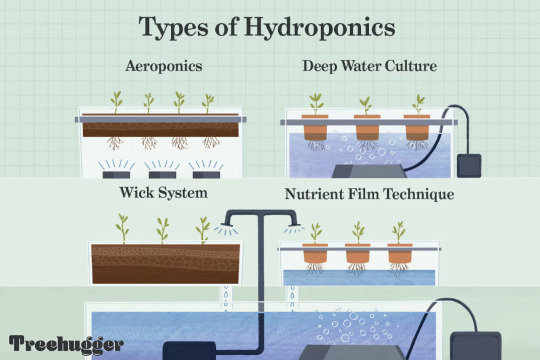
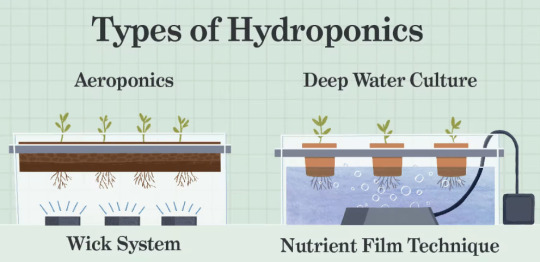

What Is Hydroponics?
How hydroponics works, types, and pros and cons.
By Katherine Gallagher
Fact checked by
Elizabeth MacLennan
Hydroponics is a form of farming that uses a nutrient solution root medium, rather than soil, to grow plants. Also referred to as tank farming, hydroponic plant roots may simply hang in water containing a mixture of dissolved nutrients or be supported by an inert substrate growing medium. Often, the irrigation and fertilizing is performed mechanically in smaller spaces, and even vertically (known as vertical gardens), making it a more budget-friendly and labor-saving farming method. Vegetables like cucumbers and leafy greens like spinach are some of the most popular plants that are grown hydroponically, but gardeners can easily grow herbs or fruiting plants like strawberries, as well.
How Does Hydroponics Work?
Hydroponics involves any plants that are grown without the use of soil, the plants simply get their essential nutrients from a different source. Depending on the type of hydroponic system used, the plant’s roots may grow directly into a liquid solution or into a medium such as clay pebbles, peat moss, or sand (in an aggregate system). This way, the grower has control over environmental conditions like temperature and pH balance as well as the plant’s exposure to nutrients.
Hydroponics can be as simple or as complicated as you want it to be. Some operations can range 25,000 square feet and produce 10,000 heads of lettuce per day, yet something as uncomplicated as sticking the base of a leafy vegetable into a glass of water to regrow is also a form of hydroponics. While soil is often the easiest method of growth among traditional gardens, plants don’t technically need it; the photosynthesis process, where they use sunlight to convert carbon dioxide and water into glucose for energy, only really requires water, sunlight, carbon dioxide, and nutrients. Nutrients for hydroponic gardening consist of both macronutrients and micronutrients, including carbon, phosphorus, hydrogen, nitrogen, oxygen, sulfur, potassium, magnesium, calcium, zinc, nickel, boron, copper, iron, manganese, molybdenum, and chlorine.
Types of Hydroponics
There are several techniques when it comes to hydroponics, all with different levels of difficulty, maintenance requirements, and budget. Beginners are suggested to start with either the basic wick system or the deep water culture system before graduating to more expert-level systems like the nutrient film technique, the ebb and flow system, drip systems, and the aeroponic system. Non-soil growing mediums can include sand, rock wool, peat moss, perlite (a form of obsidian), and coconut coir (the fibrous, middle portion of the coconut between the shell and the outer coat). Because of the versatility of hydroponics, growers can also get creative with medium materials that might otherwise go to waste, such as sheep wool and rice husks.
Wick System
This system has no electrical component and doesn’t require any advanced machinery, which is why it is considered the most basic of the hydroponic systems. The plants are suspended in a growing medium above a tank filled with water and nutrient solution, which are transported to the plants’ roots by way of a wick (like a piece of rope or felt) connecting the solution with the growing medium.
While the wick system is cheap and easy, it’s not suitable for plants and vegetables that require a lot of water, plus it can be inefficient in delivering nutrients. Hydroponic aficionados refer to this system as the "training wheels" of hydroponics.
0 notes
Text
I hit a creativity block ! I got some of a wireframe finish but I think I need some time to refresh now. I went outside to check on my plants and they're doing great (except my strawberries.. I'll buy from a nursery next time).
If you don't already know, next time you buy green onions, save the roots and put them in a container (I used a leftover jar) with some soil + water :o they regrow in about a week!
I do it every single time I get green onions ! Unlimited green onion hack haha. It also works with romaine lettuce :D
0 notes
Text

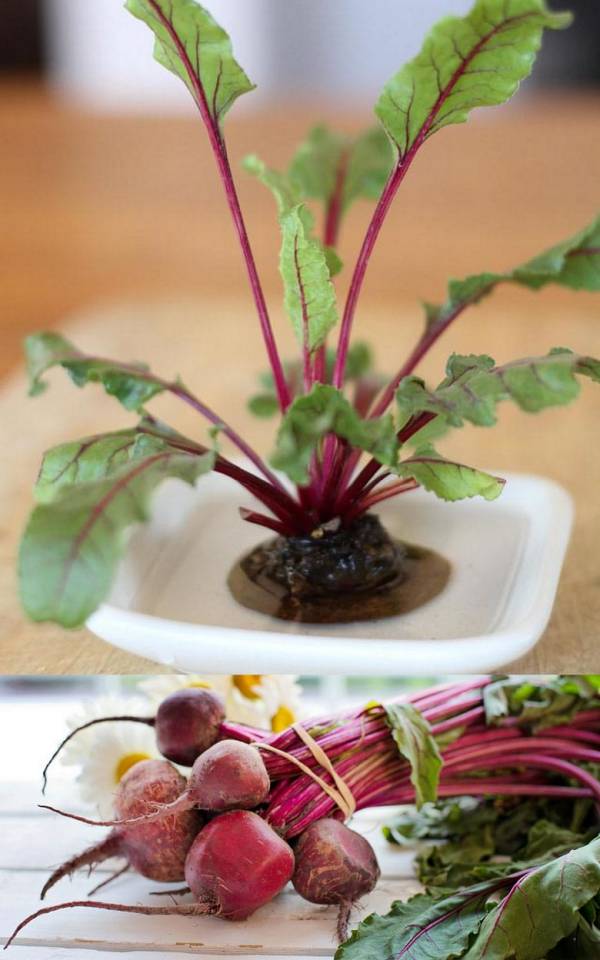
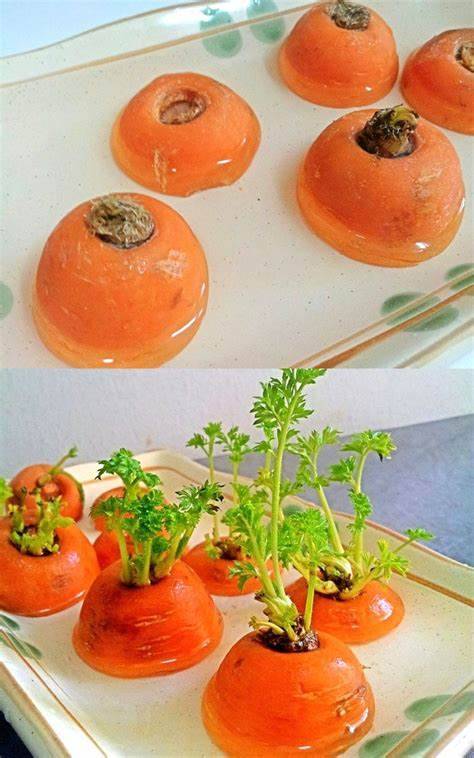
Start a windowsill garden indoors, or grow foods using grocery lettuce, beets, etc! Regrow from kitchen scraps in water or soil.
We love to regrow kitchen scraps, even just for the fun of it! It is easy and rewarding to propagate vegetable and herb trimmings for your garden, or to watch kitchen scraps grow with a sense of wonder.
-> Read on at the article here
0 notes
Text
10 Unbelievable Uses Of White Vinegar In The Garden
10 Unbelievable Uses Of White Vinegar In The Garden
CLICK TO READ MORE

Cantitoe Corners: Martha's Vegetable Garden
From early spring to fall's first frost, Martha's vegetable garden yields not only delicious crops but also clever and innovative techniques. Take a peek at Martha's garden in all its glory.

14 Common Raised Bed Mistakes You Must Avoid
If you're thinking about putting in raised beds this year, save yourself some major headaches and read this article first.
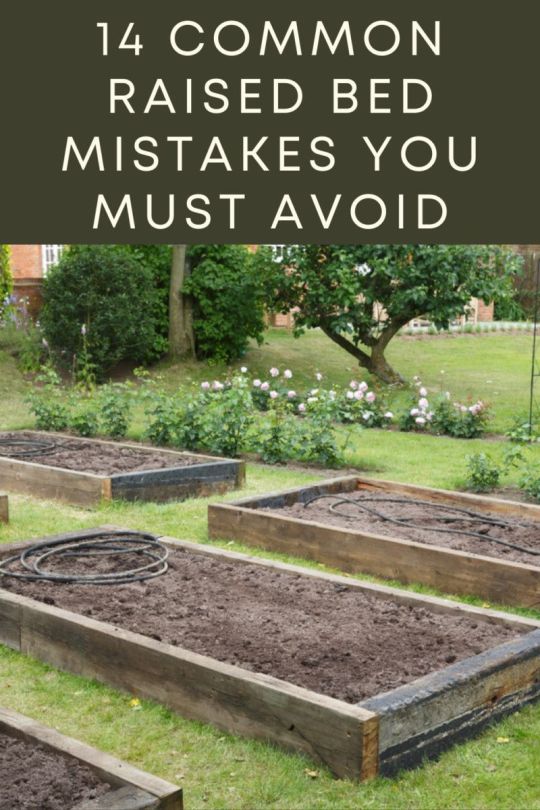
9 Common Seed Starting Mistakes To Avoid ~ Homestead and Chill

How To Grow Buckets Full Of Bell Peppers + Health Benefits & Recipes
There is nothing more beautiful than a basket full of homegrown bell peppers. I have been growing bell peppers for the last twenty years and have never been disappointed. There are many reasons to love bell peppers. They are really easy to grow, loaded with nutritional value and taste amazing raw and cooked.

40 Stunning Vegetable Garden Design Ideas Perfect For Beginners (39- 40 Stunni..., #Beginn...

12 Plants To Intercrop With Tomatoes - Better Harvest and Soil
Ever wondered what should you plant under your tomato plants? Learn more about intercropping and plant these vegetables and herbs for enhanced soil quality and better tomato harvest.
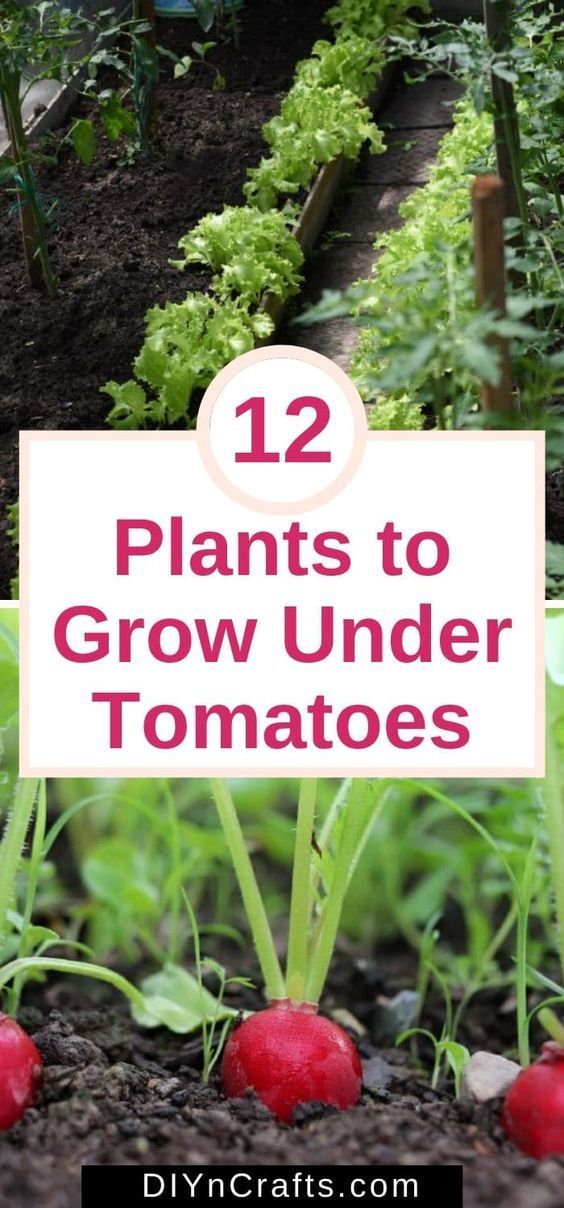
Stop Buying Garlic - Here's The Best Way To Grow An Endless Supply Right At Home
Here's the best way to grow garlic at home.

Raised Garden Beds - Brilliant DIY and Kits for Lovely and Protected Gardens.
Over 50 of the BEST Garden Ideas & DIY Yard Projects - everything from yard art, planters, garden stones, green houses, & more!
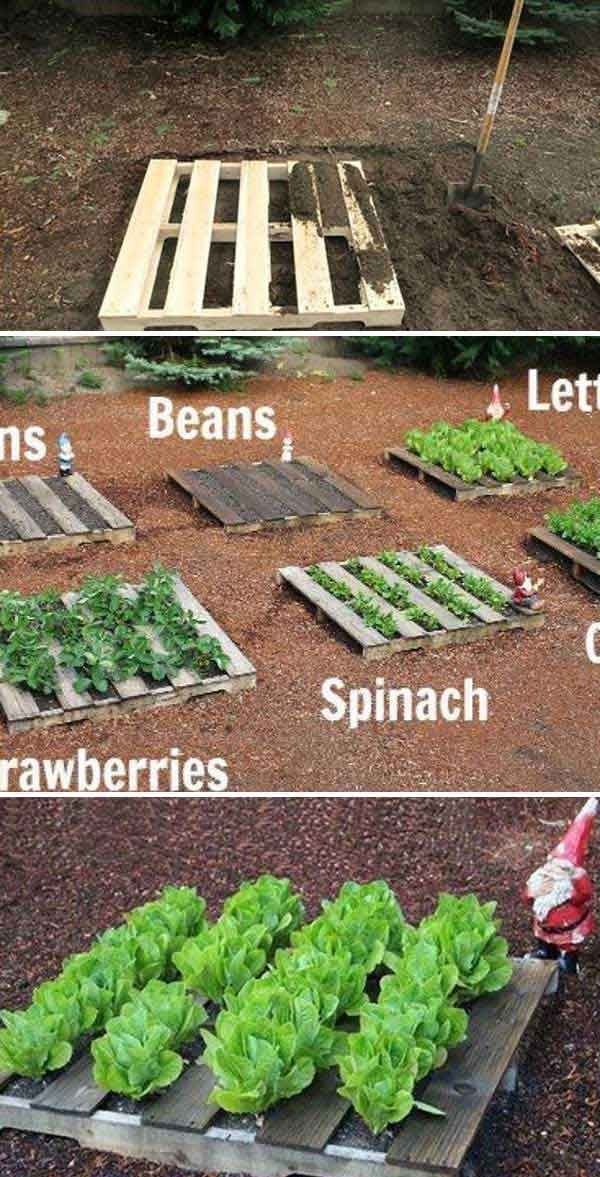
Most Common Seed Starting Problems- and How to Fix Them
Trouble shoot your common seed starting problems. Learn about the top seed starting problems and how to fix them for good!

Vertical Gardening: 10 Vegetables that Love to Climb
Vertical vegetable gardening saves space, helps avoid pests and disease, makes harvesting easier, and adds beauty to your garden.

9 Flowers You Should Grow in Your Vegetable Garden
Learn which flowers should be planted in your vegetable garden. Companion planting flowers and vegetables, yeilds better, healthier plants.
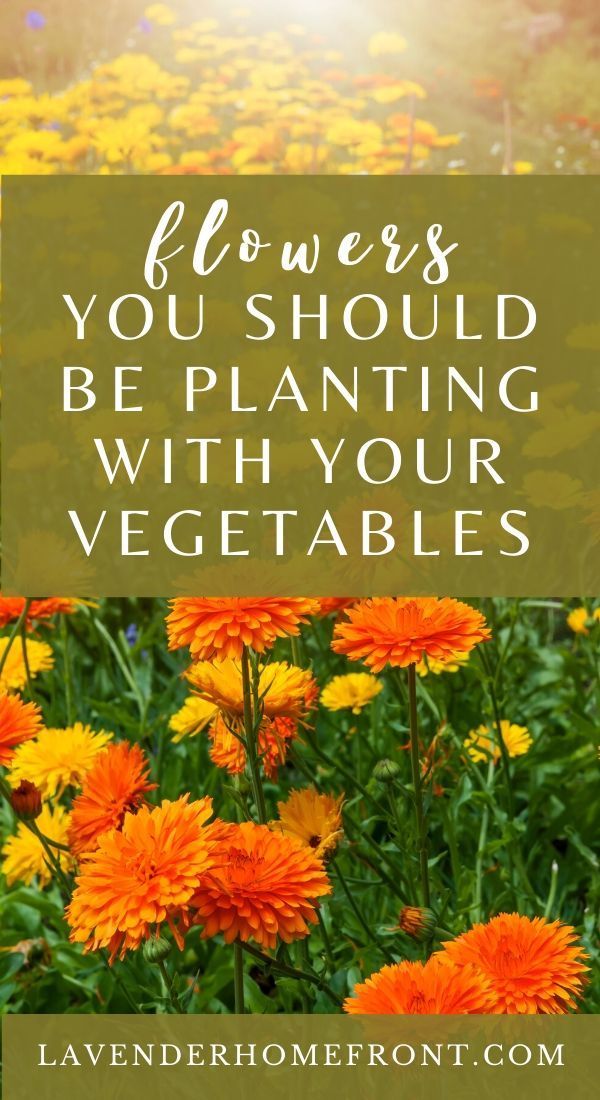
16 Best Vegetables That Grow Best In Shallow Container - Container Vegetable Gardening
Vegetables with a fibrous root system are more suitable for shallow containers. The fibrous root system is consist of small branching roots, this root system does not have a big central root that grows vertically downward.

12 Best Veggies & Herbs to Regrow from Kitchen Scraps
Best vegetables & herbs to regrow from kitchen scraps in water or soil. Start a windowsill garden indoors, or grow foods using grocery lettuce, beets, etc!

0 notes